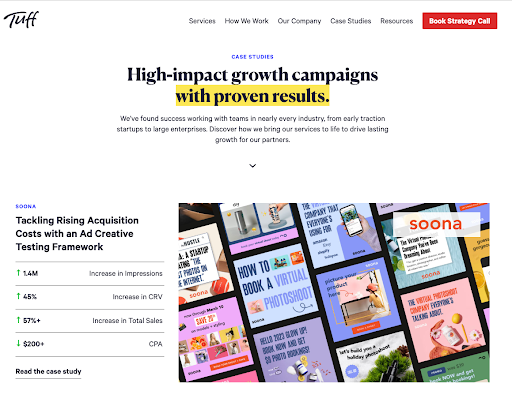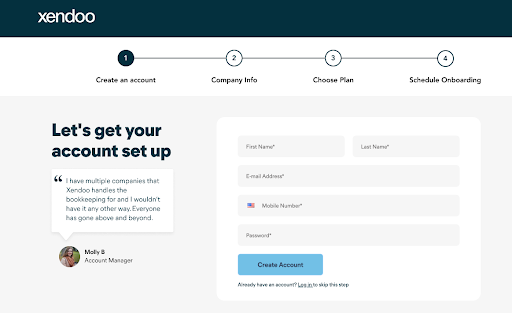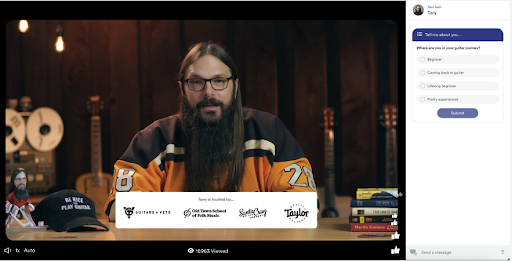Proven Social Proof Examples That Drive Higher Conversion Rates
Humans are inherently social creatures. We’ve survived and thrived for centuries, relying on one another to navigate the complexities of social interactions and decision-making.
Take online reviews–we’ve all used them to guide our decisions, whether we’re choosing a new restaurant, booking a hotel, or purchasing a product. In fact, nearly 90% of all consumers say reviews influence their purchase decisions.
As marketers, we can harness the power of social influence to engage our audiences in new and authentic ways. In this blog, we’ll review the concept of social proof and its various forms, explore social proof examples, and discuss practical strategies for using them to build trust and boost conversions.
Let’s dive in. 🚀
What is social proof?
Social proof is a psychological phenomenon in which individuals look to the actions, opinions, and behaviors of others to guide their own decisions, especially in uncertain or unfamiliar situations. This modern-day “herd mentality” creates a sense of reassurance and safety, aligning people with the collective choices and behaviors of the group.
How do marketers use social proof?
Social proof is an age-old marketing tactic. For decades, marketers have tapped into our natural inclination to trust and follow others to create highly effective marketing campaigns.

Source: Collector Weekly
Today, marketers continue to use social proof examples to influence consumer behavior and build trust. We often think of social proof as customer reviews or testimonials, but it can be found in nearly every area of our lives.
- When you’re shopping for hotels and see a banner declaring a particular hotel as “Guests’ Top Choice,” that’s social proof.
- When you’re searching for a new CRM and notice that a well-respected brand already uses the tool, that’s social proof.
- When you’re looking for a growth marketing agency with proven results and land on their case studies page, that’s social proof.
With consumer trust in short supply, marketers are turning to a new currency–the voice of the customer–to earn and keep the trust of their discerning audience.
How social proof impacts the buyer’s journey
Consumers rely heavily on social cues to make informed purchasing decisions. From the moment they become aware of a new product or service, all the way to the final purchase, social proof exerts its influence. When planned carefully, social proof can impact every marketing funnel stage. Here’s how:
- Awareness/Prospecting Stage: Introduces potential customers to your product or brand, increases visibility, and drives awareness—examples: UGC content, positive reviews, and endorsements.
- Consideration Stage: Builds trust and credibility while encouraging exploration—examples: testimonials, trust icons, and case studies.
- Intent Stage: Validates decisions and instills confidence in the choice—examples: testimonials and purchase data.
- Purchase/Loyalty Stage: Reinforces and deepens trust, often through advocacy–examples: endorsements, social media content, and testimonials.
Types of social proof
Marketers can embed social proof into virtually every channel, platform, or product page. Below, we’ll review social proof examples and the five most common (and most effective) forms.
- Reviews & Testimonials: A customer review or testimonial is the essence of social proof. It is a customer’s specific, authentic feedback about their experience with a product, service, or business. When featured on product pages, customer reviews can lead to 3.5 times more conversions.
- Case Studies: Case studies are real-life stories that detail how a product or service solves a specific challenge for a customer. Typically used in B2B settings, case studies help establish credibility, address pain points, and push buyers from consideration to conversion.
- Trust Icons: A trust icon is a visual symbol or badge displayed on a website or in marketing materials to convey trustworthiness and security. Trust icons alleviate natural skepticism and increase buyers’ confidence in a brand. Examples include certifications, recognizable brand logos, and security seals.

Source: Sabio
- Data: Data quantifies and supports the legitimacy of a product or service. Data can include purchase data, results, number of followers, etc. This numerical evidence reinforces value and impact, further bolstering consumer trust.
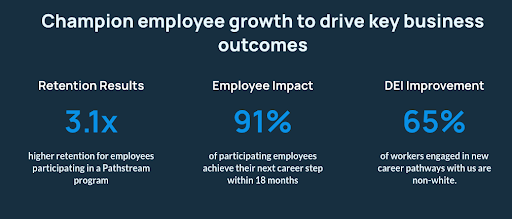
Source: Pathstream
- Endorsements: Endorsements are a tried-and-true persuasion tactic. Endorsements are praise or approval from celebrities, industry experts, or influencers. Today, a commonly used format is user-generated content, with many brands using influencers to create videos that feel authentic and relatable to their target market.
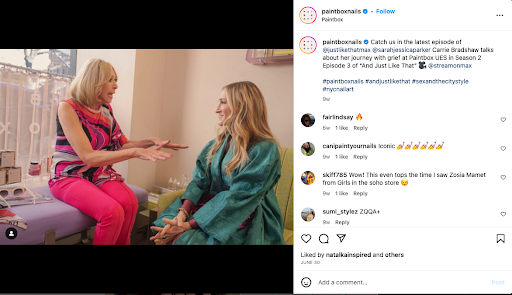
Source: Paintbox
Social Proof and Conversion Rate Optimization
Social proof and conversion rate optimization go hand in hand. Think of conversion rate optimization as the roadmap, with tactics like social proof fueling the success of your online experience and bottom line.
What is conversion rate optimization?
Conversion rate optimization (CRO) is the process of fine-tuning your marketing funnel to get a visitor to take a desired action–whether that’s making a purchase, signing up for a free trial, or filling out a contact form. The primary objective of CRO is to maximize the effectiveness of your online presence by delivering a seamless and relevant user experience from start to finish.
What levers can you use to optimize your website?
To achieve this, CRO experts deploy tried-and-true tactics to convert existing website traffic into revenue. From compelling copy to intuitive landing pages and funnel set-up, there are several levers you can pull to optimize websites and increase conversion potential.
One of those levers is social proof. Social proof validates claims, enhances user confidence, and humanizes your marketing efforts. Paired with a solid testing framework, you can implement different forms of social proof on your website to drive more users toward an end goal.
How CRO impacts your bottom line
CRO is critical to any long-term growth strategy. At its core, it is laser-focused on revenue. It is the meticulous, data-led process of identifying leaks in your funnel, executing optimizations, and refining strategies to boost conversions and maximize your bottom line.
At Tuff, our team of CRO experts has built a battle-tested process for full-funnel conversion rate optimization. We utilize a systematic approach to testing and experimentation to create highly effective landing pages, web pages, or product flow iterations. The result? Higher quality leads, lower acquisition costs, and more revenue for our partners.
Social Proof Examples in Action
Our CRO team has found success working with teams in nearly every industry. We utilize proven growth strategies to help our partners create lift and hit their conversion goals. Below are three examples of social proof as key ingredients in our conversion formula.
Xendoo
Xendoo is an online bookkeeping service and a long-time partner of Tuff. As part of a recent CRO initiative, our team set out to increase conversions by optimizing the product flow with social proof, clearer copy, and more information about add-ons. We implemented these changes on the sign-up page, plan selection page, and billing page.
The result? After 30 days of testing, we saw a 31.74% lift in total sign-ups, validating our hypothesis that if we embed cleaner, more trustworthy copy into the sign-up flow, we would increase conversions.
Tony’s Acoustic Challenge
Tony’s Acoustic Challenge is an online program that helps people learn guitar with bite-sized daily lessons. During our partnership, one of our CRO initiatives was to optimize an existing ad campaign to increase webinar engagement.
We hypothesized that if we added several forms of social proof to the webinar video, we would increase engagement and visits to the pricing page. To achieve this, we added four social proof sections throughout the video.
The result? By adding social proof to the webinar, we were able to build more trust with the viewers and increase conversions by over 10%.
Bit.io
Bit.io is a cloud-based data-sharing platform that partnered with Tuff to increase platform sign-ups. Our first CRO objective was to optimize the homepage. In addition to headline and color enhancements, we placed logos of well-known companies that use Bit.io and a headline that communicated the large number and types of users.
The result? In one week, the new homepage converted at 11.84%, while the existing homepage had a conversion rate of 5.59%–a 111.8% lift with simple copy tweaks and the addition of trust icons and user testimonials.
Activating Social Proof on Your Site
To incorporate social proof onto your website, start by gathering customer reviews, testimonials, case studies, and any other types of user-generated feedback that will support the story you’re trying to tell. Then, work with your team to strategically place the content at various touch points in your funnel to address pain points, counter objections, and reinforce the value of your offering.
Utilize your analytics and reporting tools to optimize the types of social proof you use and where you place it. Set up testing guidelines to measure whether it’s driving the user toward your desired action and scrap it if not. Continue to follow this cadence–test, learn, optimize, repeat–to systematically and strategically drive up your conversion rates.
Ready to activate social proof on your site to get more revenue out of the traffic you already have? Let’s chat.



